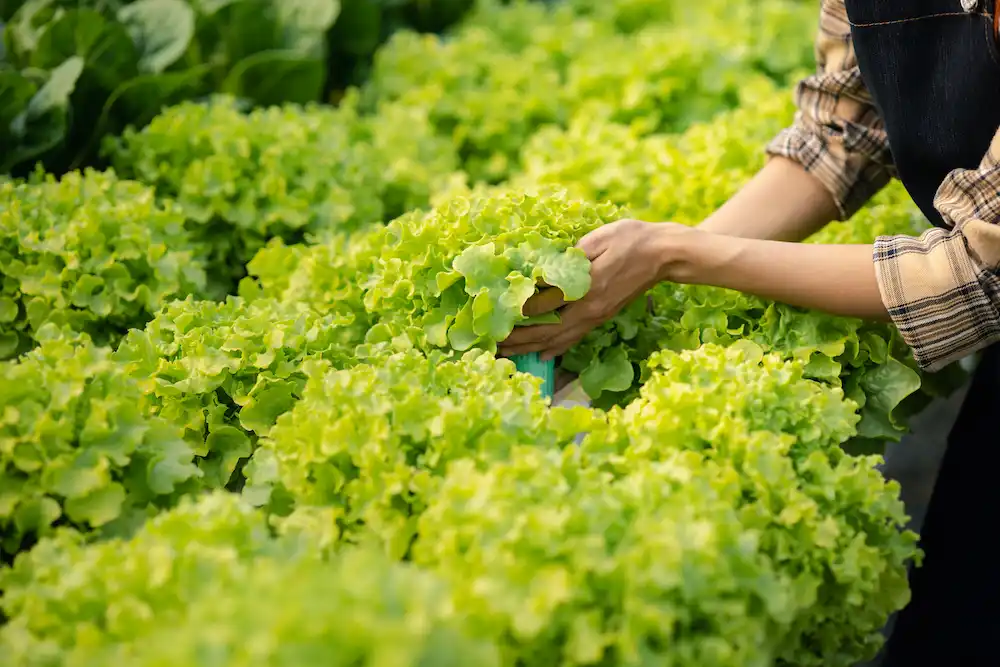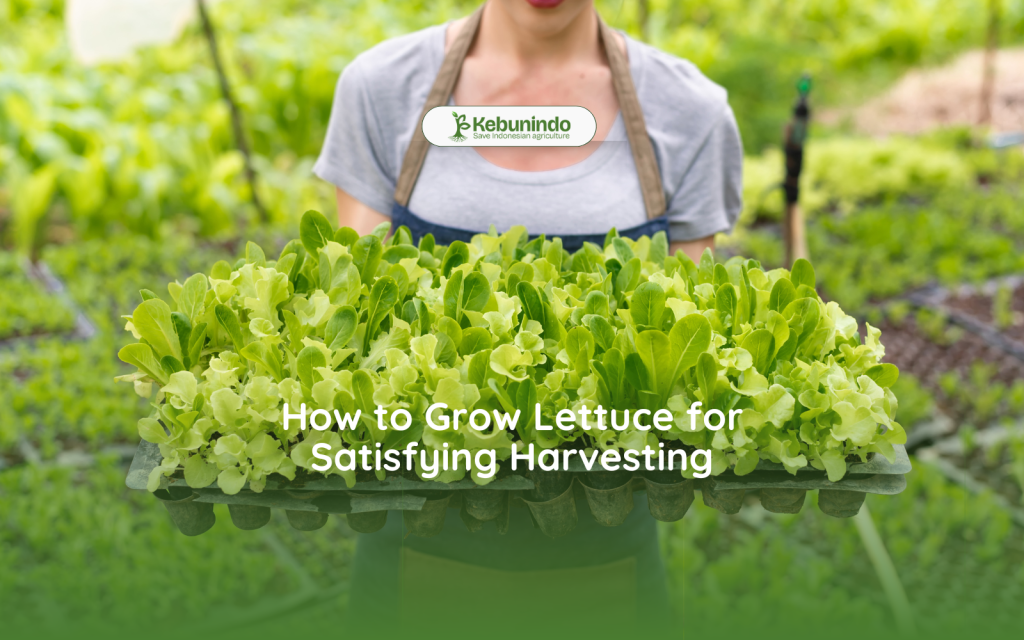Lettuce is a vegetable plant that is consumed for its young leaves. Lettuce is a vegetable commodity that is popular with the public, so the demand for this vegetable is very large.
The increasing demand for lettuce in the market has led to this commodity being widely cultivated by people in various countries. Here are some things to consider when preparing to plant lettuce that you can follow to get good crop results.
1. Selecting the Right Variety
Now new, superior varieties have been discovered, thus providing great hope for increasing lettuce production in Indonesia.
In Indonesia, there are local and imported lettuce varieties. Some varieties that are generally widely cultivated by Indonesian farmers and circulated in the market are Peto Seed, Yasui, Known You Seed, Liong You Seed, and others.
2. Land Preparation

Things that need to be considered in preparing land for planting lettuce, so that it meets the growing requirements, are as follows:
- Plow the land with a tractor or a plow pulled by animals such as cows/buffalo to a depth of 30-40 cm.
- Loosen the soil again by hoeing thinly to a depth of 30 cm and make beds and ditches at the same time.
- The beds are made in an east-west direction with a width of 60-80 cm, so that each bed can be planted with 2-3 rows of plants. The height of the bed is 30-40 cm.
- For the width of the gutter is 40 cm. Around the beds, make a drainage channel with a width and depth of 50 cm.
3. Basic Fertilization
Basic fertilization is carried out simultaneously with the soil processing stage. Fertilization uses manure, compost, or green manure. The dose of manure given is 10-20 tons/ha.
Basic fertilization can also use inorganic fertilizers Harmony BS1 and Harmony P1 to replace manure. The dose given is 8 liters/ha.
4. Seed Preparation (Seeds)
Lettuce cultivation is propagated by seeds. Seeds (seeds) need to be sown first so that they can grow into good seedlings.
Choose whole seeds (no defects/injuries), healthy seeds that do not show any signs of pest or disease attack, clean seeds or seeds that are not mixed with other seeds, and seeds that are not wrinkled.
5. Planting Lettuce Seeds

Before planting seeds, the seedbed or nursery needs to be watered first so that the soil is wet and moist.
Lettuce seeds can be spread evenly on the surface of the soil of the seedling medium or bed, then covered with a thin layer of soil. The seedling bed can also be made into grooves approximately 0.5-1 cm deep with a distance between grooves of 5 cm.
6. Regular Watering

Watering is done in the morning or evening. The volume of watering is sufficient as long as the soil is wet (reaching field capacity).
At the beginning of plant growth, watering can be done twice a day (if not using black silver plastic mulch). If the lettuce planting technique uses a black silver plastic mulch system, watering does not need to be done often. This is because black silver plastic mulch can withstand groundwater evaporation.
7. Follow-up fertilization
The fertilizers used for follow-up fertilization are inorganic fertilizers in the form of urea fertilizer, SP-36 fertilizer (super phosphorus), and KCl fertilizer (potassium chloride).
The need for NPK fertilizer (Urea, SP-36, and KCl) per hectare as follow-up fertilizer for lettuce plants is as follows.
- Urea fertilizer = 200 kg/ha.
- SP-36 fertilizer = 125 kg/ha.
- KCl fertilizer = 100 kg/ha.
8. Weeding and hoeing
Weeding can be done in several ways, namely:
- Manually,pulling out by hand or using a pick (kored) tool. Grass (weeds) growing in the gutter can be cleaned using a hoe.
- Mechanically,uprooting using machine tools. Such as: dry land weeding tools (cono weeder).
- Chemically,using weed killers (herbicides). Some types of herbicides that can be used include Actril DS, Ferninine 720 AS, Fusilade 25 EC, Roundup, Saturin 500/50 EC, Lasso 480 EC, and so on.
In addition to weeding, light tilling or soil cultivation is also carried out around the plants. The goal is to loosen the compacted soil so that air circulation in the soil can run normally again. If the planting technique uses black silver plastic mulch, tilling is not necessary. This is because the soil covered with mulch still has a good soil structure.
9. Pest and Disease Control

Pest and disease control in lettuce plants can be done through technical, mechanical, chemical, and biological cultures. Pests that attack lettuce plants include earthworms, cropworms, tritip worms, armyworms, snails, aphids, crickets and gangsir, mole crickets or ground dogs, earthworms, gurem.
Diseases that are often found attacking lettuce plants include mosaic disease, wet rot disease, leaf rot disease, rhizoctonia rot disease, cercospora leaf spot disease.
10. Lettuce Harvest

Lettuce plants have a harvest age that varies between 20-75 days after transplanting. Lettuce that can be harvested has the characteristics of the bottom leaves already lying almost touching the ground, the plant has not flowered, the plant is at its maximum size, if the leaves are tried to be eaten, the taste is delicious, fresh, and crunchy.
Lettuce harvesting is done by cutting the base of the stem close to the ground surface using a sickle or sharp knife.
11. Post harvest
Harvested lettuce leaves are cleaned by removing useless parts and washing to remove dirt and pesticide residues that are still attached to the lettuce leaves. After washing, do the drying process to prevent high humidity in the lettuce leaf tissue and remove water due to washing.




